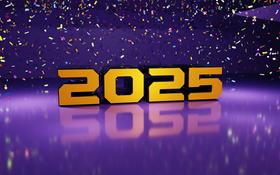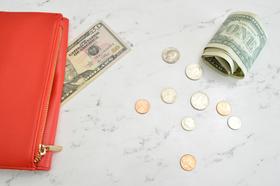For the 2025-26 school year, there are 6 alternative public high schools serving 1,230 students in District Of Columbia.
The top ranked alternative public high schools in District Of Columbia are Ballou Stay High School, Luke C. Moore High School and Maya Angelou Academy At Youth Services Center. Overall testing rank is based on a school's combined math and reading proficiency test score ranking.
District Of Columbia alternative public high schools have an average math proficiency score of 9% (versus the District Of Columbia public high school average of 15%), and reading proficiency score of 14% (versus the 35% statewide average).
District Of Columbia alternative public high school have a Graduation Rate of 11%, which is less than the District Of Columbia average of 76%.
The school with highest graduation rate is Maya Angelou Pcs - High School, with 40-49% graduation rate. Read more about public school graduation rate statistics in District Of Columbia or national school graduation rate statistics.
Minority enrollment is 100% of the student body (majority Black), which is more than the District Of Columbia public high school average of 91% (majority Black).
Best Alternative Public High Schools in District Of Columbia (2025-26)
School
(Math and Reading Proficiency)
(Math and Reading Proficiency)
Location
Quick Facts
Rank: #1 - 21. - 2.
Ballou Stay High School
Alternative School
(Math: ≤20% | Reading: ≤20%)
Rank:
Rank:
6/
Top 50%10
3401 4th St. Se
Washington, DC 20032
(202) 645-3390
Washington, DC 20032
(202) 645-3390
Gr: 9-12 | 294 students Student-teacher ratio: 11:1
Rank: #1 - 21. - 2.
Luke C. Moore High School
Alternative School
(Math: ≤20% | Reading: ≤20%)
Rank:
Rank:
6/
Top 50%10
1001 Monroe St. Ne
Washington, DC 20017
(202) 281-3600
Washington, DC 20017
(202) 281-3600
Gr: 9-12 | 264 students Student-teacher ratio: 13:1 Minority enrollment: 99%
Rank: #3 - 43. - 4.
Maya Angelou Academy At Youth Services Center
Alternative School
(Math: ≤10% | Reading: ≤20%)
Rank:
Rank:
4/
Bottom 50%10
1000 Mount Olivet Road Ne
Washington, DC 20002
(202) 202-7007
Washington, DC 20002
(202) 202-7007
Gr: 6-12
Rank: #3 - 43. - 4.
Roosevelt Stay High School
Alternative School
(Math: ≤10% | Reading: ≤20%)
Rank:
Rank:
4/
Bottom 50%10
2001 10th St Nw
Washington, DC 20001
(202) 576-8399
Washington, DC 20001
(202) 576-8399
Gr: 9-12 | 407 students Student-teacher ratio: 8:1 Minority enrollment: 99%
Rank: #55.
Maya Angelou Pcs - High School
Alternative School
Charter School
Charter School
(Math: ≤5% | Reading: 6-9%)
Rank:
Rank:
1/
Bottom 50%10
5600 East Capitol Street Ne
Washington, DC 20019
(202) 379-4335
Washington, DC 20019
(202) 379-4335
Gr: 9-12 | 224 students Student-teacher ratio: 11:1
Rank: n/an/a
Dc Department Of Corrections
Alternative School
1901 D Street Se
Washington, DC 20003
(202) 698-4932
Washington, DC 20003
(202) 698-4932
Gr: 9-12 | 41 students Student-teacher ratio: 3:1
Frequently Asked Questions
What are the top ranked alternative public high schools in District Of Columbia?
The top ranked alternative public high schools in District Of Columbia include Ballou Stay High School, Luke C. Moore High School and Maya Angelou Academy At Youth Services Center.
How many alternative public high schools are located in District Of Columbia?
6 alternative public high schools are located in District Of Columbia.
What is the racial composition of students in District Of Columbia?
District Of Columbia alternative public high schools minority enrollment is 100% of the student body (majority Black), which is more than the District Of Columbia public high schools average of 91% (majority Black).
Recent Articles

Texas Schools Enrollment Trends & Policy in 2025
Latest data and policy changes on Texas public school enrollment growth, funding, and virtual education in 2025.

Financial Aid & Hidden Costs in Public Schools
Learn about financial aid and hidden costs in public schools. Discover what parents should budget for beyond tuition-free education.

NYC Schools Still Most Segregated in 2025
Despite reforms, New York City schools remain the most segregated in the U.S. in 2025. Here鈥檚 what parents and educators need to know.
